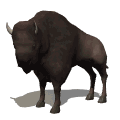
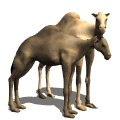

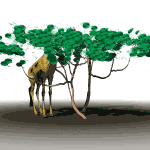
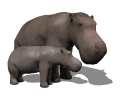

Placental mammals
Placental mammals are characterized by the following:
- Brain capacity is increased, allowing more capacity for memory, learning, and conscious thought.
- Milk-secreting glands nourish the young.
- Mammals show behavioral flexibility, the ability to expand on the basics with novel forms of
behavior.
- Hair covers at least part of the body (whales are an exception).
- Dentition (incisors, canines, premolars, and molars) is extensive and specialized to meet
dietary habits.
- Placental mammals nourish their young within the mother's uterus by the placenta that is a
composite of maternal and fetal tissue.
This animation (No Audio) describes the dentition of
placental mammals.
The placenta is the organ of exchange of nutrients and
wastes between the maternal blood and the fetal blood. Placental nourishment is more efficient than
nourishment of pouched animals. Placental mammals develop more quickly than marsupials.
Representatives of this group are found in virtually every aquatic and terrestrial environment.
Placental mammals are separated into large groups based on their characteristics and adaptations.
Some examples are listed below:


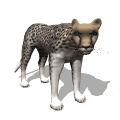

 * Carnivora- are carnivores (flesh eaters), they have teeth adapted for tearing flesh, clawed
toes and well-developed brains. Common animals in this group include dogs, cats, bears, seals and
otters.
* Carnivora- are carnivores (flesh eaters), they have teeth adapted for tearing flesh, clawed
toes and well-developed brains. Common animals in this group include dogs, cats, bears, seals and
otters.
The San Diego Zoo has a live
Polar Bear Cam.
The San Diego Zoo also has a live
Panda Cam.
Between 7am and 7pm PST you can visit the Monterey Bay Aquarium and watch the
sea otters.
If they aren't performing live, there is a short video clip below the live cam.

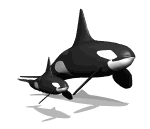
 * Cetacea- are mammals that are adapted for life in the ocean. Whales and dolphins belong to this
order.
* Cetacea- are mammals that are adapted for life in the ocean. Whales and dolphins belong to this
order.
Sea World in San Digeo has a live Shamu Cam
where you can watch the activities of Shamu the whale.
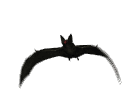 * Chiroptera- are mammals that fly. They are mostly nocturnal. Bats belong to this order.
* Chiroptera- are mammals that fly. They are mostly nocturnal. Bats belong to this order.
* Insectivora- are mammals that eat insects. They typically have long skulls, narrow snouts, and
clawed feet. Common animals in this order are shrews, hedgehogs and moles.
 * Lagomorpha- have long rear limbs adapted for jumping. They include rabbits and hares.
* Lagomorpha- have long rear limbs adapted for jumping. They include rabbits and hares.


 * Perissodactyla- are mammals that have hooves, are herbivores (plant eaters) and have an odd
number of toes on each foot. Horses, zebra and rhinoceroses belong to this order.
* Perissodactyla- are mammals that have hooves, are herbivores (plant eaters) and have an odd
number of toes on each foot. Horses, zebra and rhinoceroses belong to this order.

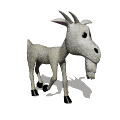


 * Artiodactyla- are herbivores that have hooves with an even number of toes. Sheep, goats, pigs
and deer belong to this order.
* Artiodactyla- are herbivores that have hooves with an even number of toes. Sheep, goats, pigs
and deer belong to this order.
 * Primates- are mammals that have thumbs used for grasping. They are omnivores (eat both plants
and animals). Monkeys, apes and humans belong to this order.
* Primates- are mammals that have thumbs used for grasping. They are omnivores (eat both plants
and animals). Monkeys, apes and humans belong to this order.
The San Diego Zoo has a live
Ape Cam .
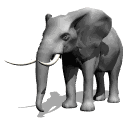 * Proboscidea- are mammals with long muscular trunks and extra long teeth called tusks. Elephants
belong to this order.
* Proboscidea- are mammals with long muscular trunks and extra long teeth called tusks. Elephants
belong to this order.
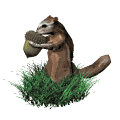


 * Rodentia- have teeth adapted for gnawing and are relatively small. This order includes the
largest number of mammals including rats, mice, porcupines, gophers and squirrels.
* Rodentia- have teeth adapted for gnawing and are relatively small. This order includes the
largest number of mammals including rats, mice, porcupines, gophers and squirrels.
PREVIOUS
NEXT
LECTURE 18 INDEX
MAIN INDEX










 * Carnivora- are carnivores (flesh eaters), they have teeth adapted for tearing flesh, clawed
toes and well-developed brains. Common animals in this group include dogs, cats, bears, seals and
otters.
* Carnivora- are carnivores (flesh eaters), they have teeth adapted for tearing flesh, clawed
toes and well-developed brains. Common animals in this group include dogs, cats, bears, seals and
otters.

 * Cetacea- are mammals that are adapted for life in the ocean. Whales and dolphins belong to this
order.
* Cetacea- are mammals that are adapted for life in the ocean. Whales and dolphins belong to this
order. * Chiroptera- are mammals that fly. They are mostly nocturnal. Bats belong to this order.
* Chiroptera- are mammals that fly. They are mostly nocturnal. Bats belong to this order. * Lagomorpha- have long rear limbs adapted for jumping. They include rabbits and hares.
* Lagomorpha- have long rear limbs adapted for jumping. They include rabbits and hares.

 * Perissodactyla- are mammals that have hooves, are herbivores (plant eaters) and have an odd
number of toes on each foot. Horses, zebra and rhinoceroses belong to this order.
* Perissodactyla- are mammals that have hooves, are herbivores (plant eaters) and have an odd
number of toes on each foot. Horses, zebra and rhinoceroses belong to this order.



 * Artiodactyla- are herbivores that have hooves with an even number of toes. Sheep, goats, pigs
and deer belong to this order.
* Artiodactyla- are herbivores that have hooves with an even number of toes. Sheep, goats, pigs
and deer belong to this order. * Primates- are mammals that have thumbs used for grasping. They are omnivores (eat both plants
and animals). Monkeys, apes and humans belong to this order.
* Primates- are mammals that have thumbs used for grasping. They are omnivores (eat both plants
and animals). Monkeys, apes and humans belong to this order. * Proboscidea- are mammals with long muscular trunks and extra long teeth called tusks. Elephants
belong to this order.
* Proboscidea- are mammals with long muscular trunks and extra long teeth called tusks. Elephants
belong to this order.


 * Rodentia- have teeth adapted for gnawing and are relatively small. This order includes the
largest number of mammals including rats, mice, porcupines, gophers and squirrels.
* Rodentia- have teeth adapted for gnawing and are relatively small. This order includes the
largest number of mammals including rats, mice, porcupines, gophers and squirrels.